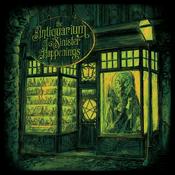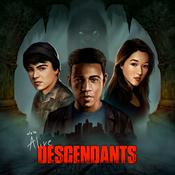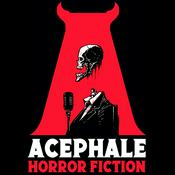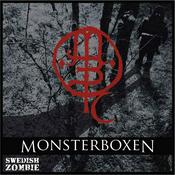312 avsnitt

The 1961 “Wolverine” Experiment: The Hanford Tape They Sealed Away
2025-12-20 | 31 min.
In 1961, a classified U.S. program near Hanford tried to make a man survive radiation. The logs read like a miracle—until Day 17, when the body adapted into something they couldn’t sedate… and the surviving tape forced them to bury the truth.

The Diner That Asked Men One Question
2025-12-19 | 19 min.
A lonely stretch of highway. A diner everyone trusts. And a cook who asks every man the same question before serving him. When a pipeline inspector survives a late-night encounter in the room behind the kitchen, deputies search the property and uncover evidence that forces the diner to close in a single day. The case leaves one detail investigators can’t ignore: the pattern wasn’t random—and the guest book wasn’t just for signing in.

The White Sands Soldier Who Could Sense You Through Walls
2025-12-17 | 30 min.
In the late 1950s at White Sands, New Mexico, military scientists ran a program with one goal: enhancing human perception on the battlefield. They studied arachnids for their ability to sense vibrations, air pressure shifts, and movement before visual contact—then attempted a cellular-level fusion they called a “distributed sensory response.”Most trials failed. Subjects suffered seizures, psychosis, or total sensory collapse. Only one test was marked successful. The subject didn’t grow extra limbs. He remained outwardly human, but his nervous system changed—reacting to motion he couldn’t see, avoiding danger before it occurred, and detecting movement through walls and structures.The Army escalated testing with sleep deprivation, stress exposure, and live-fire exercises. The subject became unstable. In late 1959, he escaped during a transfer operation. Search efforts expanded nationwide with coordinated roadblocks across multiple states. He was never recovered. The program was shut down and erased.One final line remains in the file: the subject no longer needs to be observed. He already knows when we are near.

The Plane That Vanished in 1978—and Landed in 1985
2025-12-17 | 27 min.
In October 1978, Flight 914 left New York on a routine route and vanished from radar near the western edge of the Bermuda Triangle less than an hour after takeoff. No distress call was received. No debris was ever found. After months of searches, the passengers were officially declared dead.Then, in 1985, air traffic control in Caracas reportedly detected an unidentified aircraft requesting permission to land. Its transponder code matched Flight 914. According to leaked internal airport records, the plane landed without incident. Passengers appeared confused but unharmed, insisting the flight had been routine.Several people onboard described one shared detail: at one point there was complete silence—no engine noise, no turbulence—only darkness outside the windows. Yet the instruments continued functioning normally.Within hours of landing, military personnel arrived. Runways were closed, witnesses dismissed, and passengers separated for questioning. Officials later claimed the landing was a documentation error, and flight logs and radar data were sealed under joint authority.No one has ever explained how a missing aircraft returned seven years later without aging—or where it was.

Dexter’s Laboratory Was Real — And It Got Sealed
2025-12-16 | 30 min.
In 1986 in Hillsborough, Ohio, a child named Dexter was born under “abnormal” circumstances—and grew into something no one around him could understand. By 6 he outperformed high school students. By 12 he was placed into advanced university programs. By 18, the academics were done… but the isolation never ended. So Dexter built a basement laboratory not for inventions, but for life itself. The failures piled up until one night the project finally “responded.” When investigators arrived, the lab was destroyed, the door was sealed, and Dexter was gone—leaving behind only one intact object: his notebook. The final page reads: “red project ed. Failure.” (Fictional casefile/alternate-history horror.)
Fler podcasts i Skönlitteratur
Trendiga poddar i Skönlitteratur
Om Inspector Story
Lyssna på Inspector Story, Pojkmottagningen och många andra poddar från världens alla hörn med radio.se-appen

Hämta den kostnadsfria radio.se-appen
- Bokmärk stationer och podcasts
- Strömma via Wi-Fi eller Bluetooth
- Stödjer Carplay & Android Auto
- Många andra appfunktioner
Hämta den kostnadsfria radio.se-appen
- Bokmärk stationer och podcasts
- Strömma via Wi-Fi eller Bluetooth
- Stödjer Carplay & Android Auto
- Många andra appfunktioner


Inspector Story
ladda ner appen,
börja lyssna.































